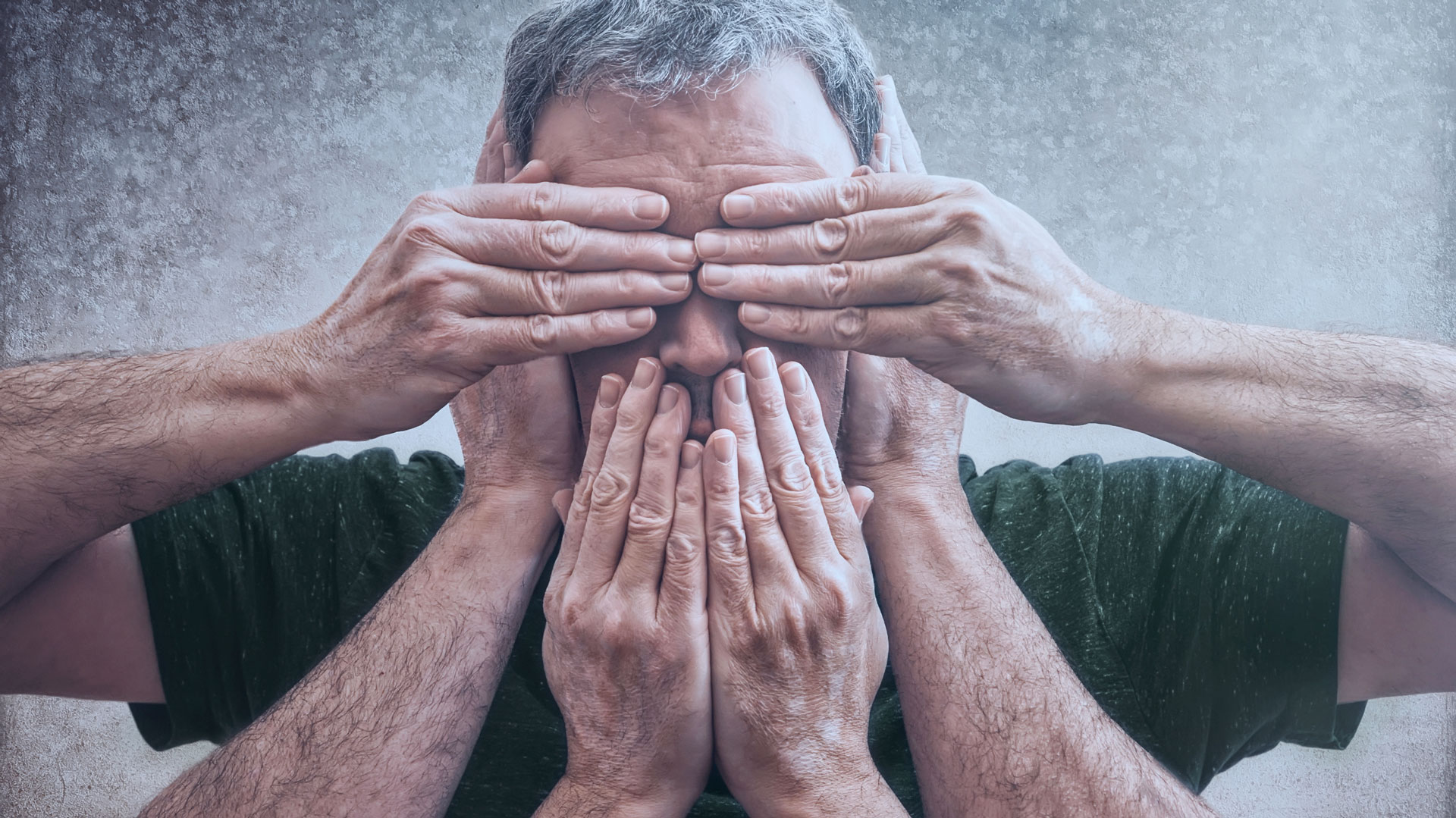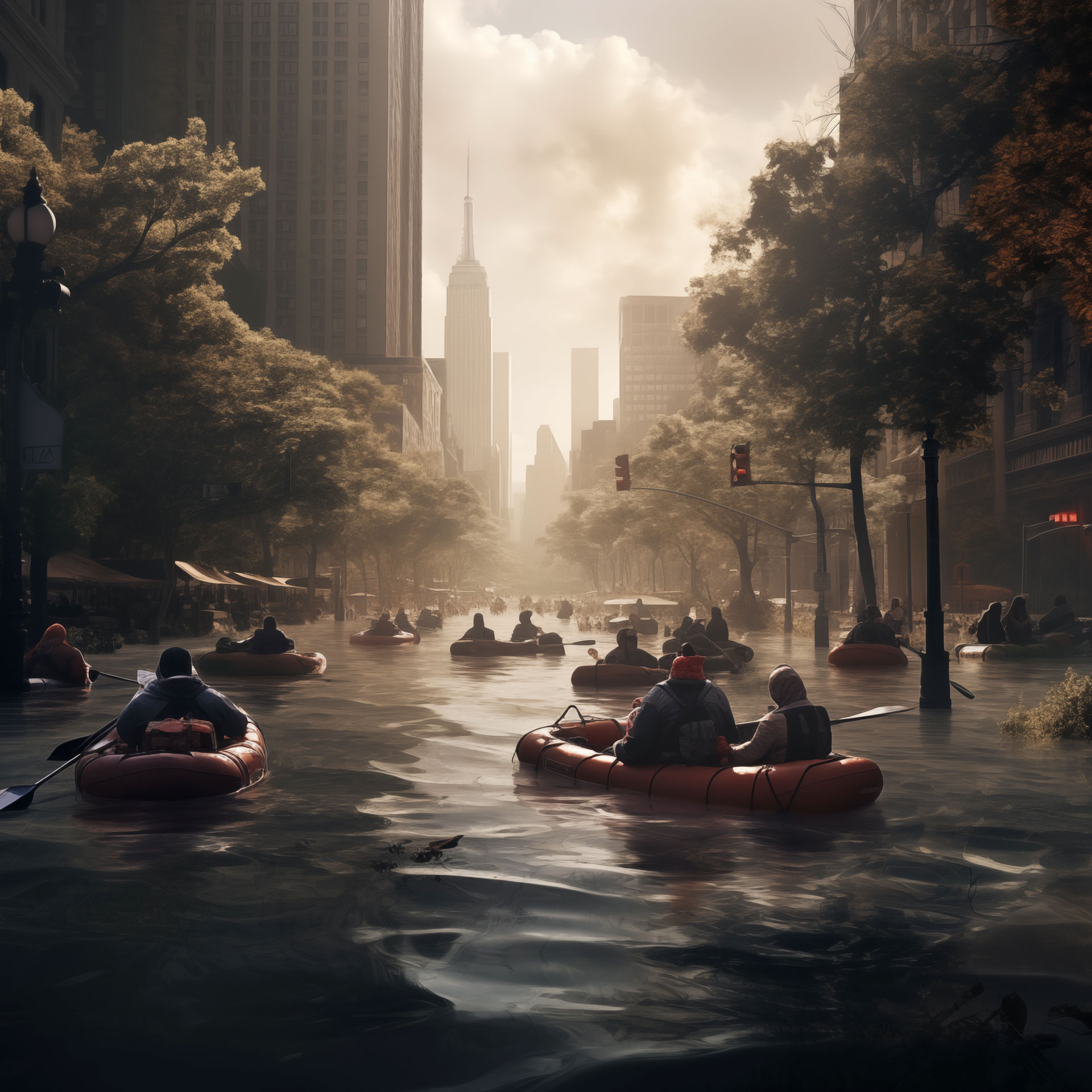
AI imagery is now on a course to unravel our understanding of visual truth in a way that no other visual innovation has before it.
- Not pen and ink illustration
- Not photography
- Not movies
- Not special effects and CGI
- No even aught-era Adobe Photoshop
All these previous innovations pale in the face of tools like MidJourney, DALL-E, and Adobe Firefly.
These generative AI image systems, the kind that easily spits out this image below of a flooded downtown Manhattan, are dream weavers that make the literal out of the imagined.

When Midjourney builds an image, there are no easily identifiable sources, mediums, or artists. Every pixel can look as imaginary or real as you want and when they leave the digital factory, these images (and video) travel fleetfooted around the world, leaving truth waiting somewhere in the wilderness.
What we see can no longer be believed. Without intention, Generative AI imagery has dismantled the concept of "Seeing is believing." That well-worn phrase, often attributed to 17th-century clergyman Thomas Fuller, has survived 400 years but doesn't stand a chance in our modern era.
And this tipping point in Generative AI imagery could not come at a worse moment. Truth and the purveyors of reality have been under attack for years. Few take the media at face value. Even officials, once the parental figures of society, are no longer trusted. People now want their own reality and facts, which can be hard-won through dedicated research or easily had through confirmation bias: finding the thing that confirms your preexisting notions and beliefs.
Into this vacuum of truth enters modern and nearly mature Generative AI. if there is no image or video to support the reality you desire, a prompt in Midjourney on Discord can deliver it:
"/Imagine Joe Biden and Donald Trump playing chess in the White House Rose Garden. Biden has his finger on his Queen and is just calling out 'Check," but Trump isn't giving in and looks ready to move his Rook and counter."

That never happened and it's unlikely it ever will but Midjourney cooked up these four versions of the image (above) in less than a minute.
Now, I told you what I was going to do and build, so you know it's fake, but not everyone is doing that.
AI image generation at this level is unquestionably fun, exciting, entertaining, and dangerous. It's a tool like any other and tends to be a reflection of whoever is using it. People with good intentions will use Generative AI imagery for good. It's a productivity tool. Those with bad intentions will use it to spread disinformation and lies.
And we will believe them.
Fallible humans
Humans are not built to recognize truth. We react to what we see, hear, touch, and feel. Much of our information comes to us through sight. What we see is what we believe. If that weren't the case, something as simple as movies would fail. Film is still frames and our brains blend it all into a believable whole. No one is moving fluidly in front of us when we watch TV and movies. Instead, they're stutter-stepping at a frame rate. The faster the FPS, the smoother the action. But it's not real.
We watch movies and know that the dinosaurs are computer generated but that doesn't stop some simian part of our brain from feeling emotion when a beloved triceratops dies or the Tyrannosaurus Rex saves the day. We're all easily manipulated and that's why we pay good money and agree to the experience.
Generative AI images use our vulnerability without permission. It presents images that, however implausible, look perfectly real and therefore become plausible to us.
Every morning, I open up Google News to check on the day's events, In recent years, a significant portion of the page is devoted to debunking fake news. Often, it's specifically about fake video and images, though usually relating to images of one real event being misrepresented as that of another.
Even so, in the US election year, we will be flooded with believable images of meetings between rivals that never took place, candidates making fools of themselves in events they never attended, and making questionable fashion choices in clothes they never wore.
Dangerous workarounds
There are very few safeguards in most of the image-generation tools I've been using over the last 12 months. Yes, they stop you from creating outright adult content or putting public figures in violent or compromising situations, but it's fairly easy to craft a prompt that can circumvent these safeguards (one commentator pointed out that while you can't depict some politicians covered in blood, you can ask Midjourney to cover them in red syrup).
The concern here is not just about static images. Midjourney is now training its AI for video creation. The process of creating believable generative AI videos is orders of magnitude harder than static images but within 6 months, it's likely that 10-second clips will be indistinguishable from the real thing.
Ultimately, seeing is no longer believing. What you see on a screen may or may not represent the truth. As a rule of thumb if you see something that confirms what you already assumed was true, have another look. Examine the image for anomalies or even too much perfection. Look for pores on the skin (or lack thereof). Count the fingers. Examine the background, which I've noticed is where generative AI can do its most slipshod work. If all else fails, start doing your own research.
In this age of generative AI imagery, we can't accept anything at face value. To protect ourselves and each other, we must become truth hunters. Question everything.







